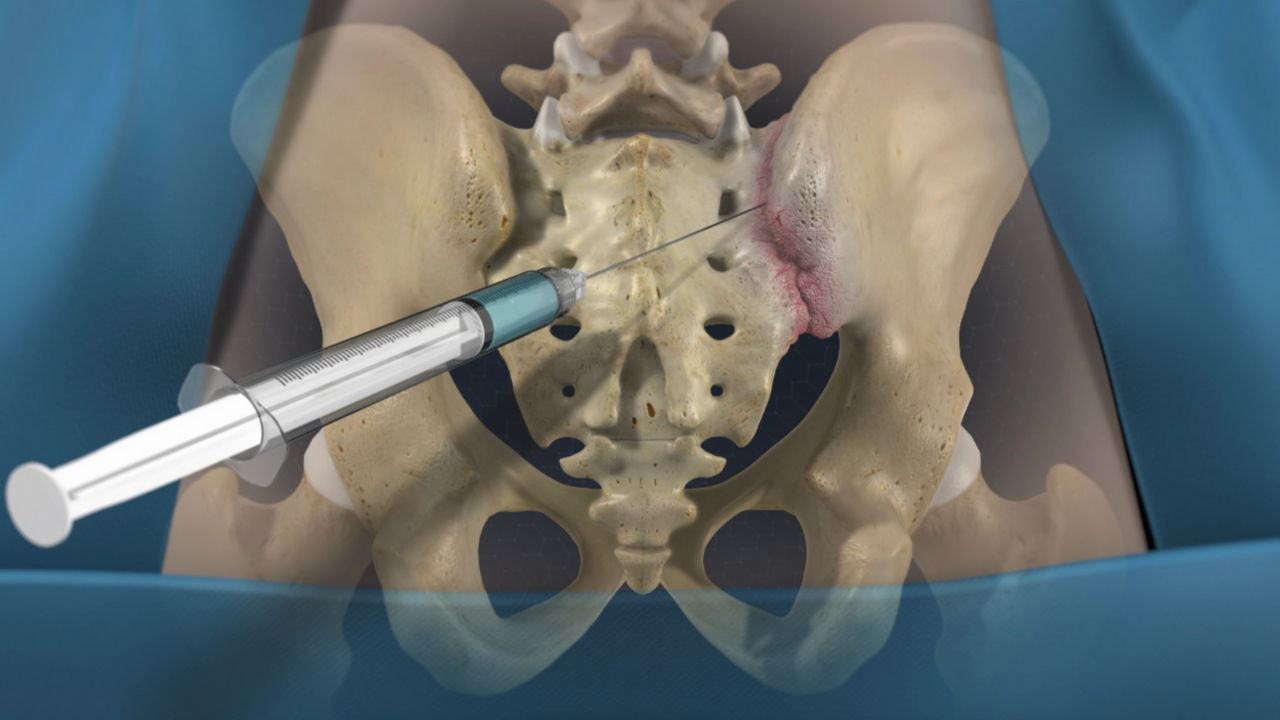
What Are Sacroiliac Joint Injections & How Do They Help Lower Back Pain?
Sacroiliac joint injections are a minimally invasive, non-surgical treatment for lower back pain that originates from the sacroiliac (SI) joint. The SI joint connects the spine to the pelvis and plays a crucial role in weight-bearing and movement. When inflamed or dysfunctional, it can cause significant pain that radiates to the lower back, hips, buttocks, and legs.
SI joint injections deliver anti-inflammatory medication and local anesthetics directly into the joint to reduce inflammation, alleviate pain, and improve mobility.
Who Can Benefit from SI Joint Injections?
SI joint injections are recommended for individuals experiencing:
- Chronic Lower Back Pain: Persistent pain that does not improve with rest or physical therapy.
- Sacroiliitis: Inflammation of the SI joint, leading to pain and stiffness.
- SI Joint Dysfunction: Abnormal movement or misalignment of the SI joint, causing discomfort and mobility issues.
- Pregnancy-Related Pelvic Pain: Increased stress on the SI joint due to hormonal and postural changes during pregnancy.
- Post-Surgical Pain: Discomfort following spinal fusion, hip replacement, or other lower back procedures.
- Accidental Pain: Pain arising from injuries such as falls or accidents that impact the lower back and pelvis.
How Do SI Joint Injections Work?
- Diagnostic Phase: A small amount of local anesthetic is injected into the SI joint to determine if it is the source of pain. If pain relief occurs, the SI joint is confirmed as the pain generator.
- Therapeutic Phase: A corticosteroid is injected to provide long-term pain relief by reducing inflammation.
- Follow-Up Treatments: If pain returns, additional injections may be recommended as part of a comprehensive pain management plan.
Benefits of SI Joint Injections
SI joint injections provide several advantages, making them a preferred treatment for SI joint pain:
- Minimally Invasive: No need for surgery or an extended recovery period.
- Targeted Pain Relief: Directly addresses inflammation and discomfort in the SI joint.
- Quick Procedure: Typically completed within 20-30 minutes.
- Improved Mobility: Allows patients to resume daily activities and physical therapy.
- Reduced Dependence on Medication: May decrease the need for opioids or NSAIDs.
- Temporary to Long-Term Relief: Depending on the severity of the condition, relief can last weeks to months, with repeat injections providing continued benefits.
What to Expect During the Procedure
Step-by-Step Process:
- Preparation: The patient lies face down on an exam table, and the injection site is cleansed and numbed with a local anesthetic.
- Fluoroscopic Guidance: A live X-ray (fluoroscopy) is used to guide the precise placement of the needle.
- Injection: A mixture of local anesthetic and corticosteroid is administered into the SI joint.
- Post-Procedure Monitoring: Patients are observed briefly before being discharged the same day.
Recovery and Aftercare:
- Most patients resume normal activities within 24-48 hours.
- Avoid strenuous activities for a few days.
- Pain relief may be immediate or take 2-7 days as the steroid reduces inflammation.
- Follow-up injections may be needed every few months if pain recurs.
Alternative Treatments for SI Joint Pain
If SI joint injections are not suitable or do not provide sufficient relief, other treatment options may be recommended:
1. Physical Therapy:
Strengthening and stretching exercises help stabilize the SI joint and reduce stress on surrounding muscles. A physical therapist may develop a personalized exercise plan to improve mobility and pain management.
2. Radiofrequency Ablation (RFA):
This minimally invasive procedure uses heat to target and disrupt pain-signaling nerves around the SI joint, providing long-lasting relief for several months or even years.
3. SI Joint Fusion:
For severe cases where other treatments fail, minimally invasive SI joint fusion may be an option. This surgical procedure stabilizes the SI joint using small implants to prevent excessive movement and pain.
4. Medications & Lifestyle Modifications:
Anti-inflammatory medications, weight management, and ergonomic adjustments to daily activities can help manage SI joint pain effectively.
Schedule a Consultation
If you suffer from sacroiliac joint pain, contact Vertex Pain Physicians, a leading pain management doctor in San Antonio, specializing in SI joint injections and other non-surgical pain relief options.
Frequently Asked Questions (FAQs)
1. How long do SI joint injections last?
Pain relief typically lasts several weeks to months, depending on the severity of inflammation.
2. How many injections can I receive?
Most patients receive 2-3 injections per year as part of a long-term pain management plan.
3. Does the procedure hurt?
Mild discomfort may occur during the injection, but local anesthesia helps minimize pain.
4. Can I exercise after the injection?
Light activity is encouraged, but avoid high-impact exercises for a few days.
5. Where can I get SI joint injections in San Antonio?
Vertex Pain Physicians offers expert SI joint injections in San Antonio for effective back pain relief. Contact our pain management clinic today to schedule an evaluation.
Medical Disclaimer
This article is for informational purposes only and is not a substitute for professional medical advice. Consult a qualified healthcare provider for diagnosis and treatment recommendations.





